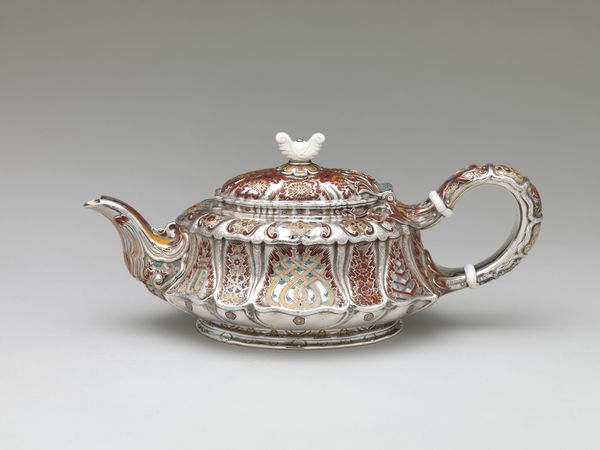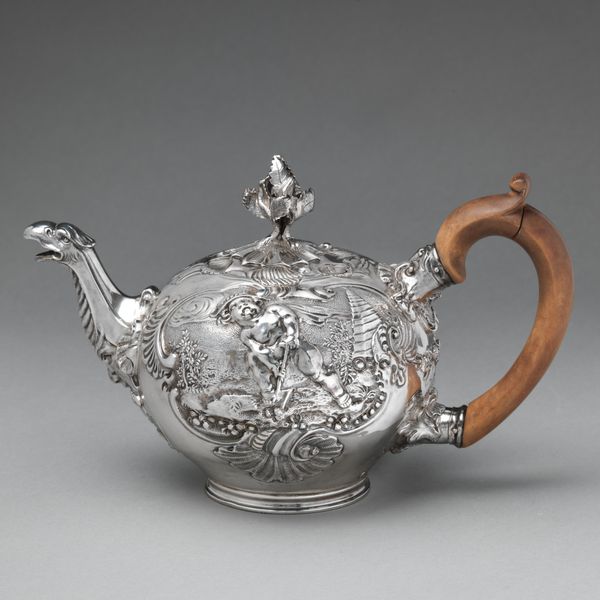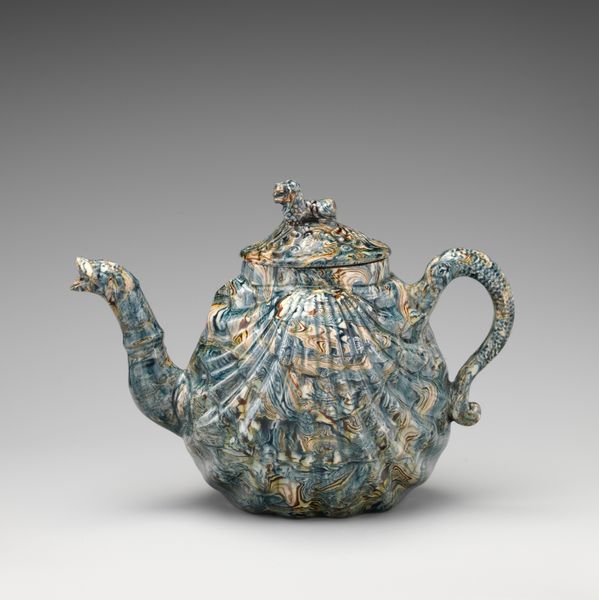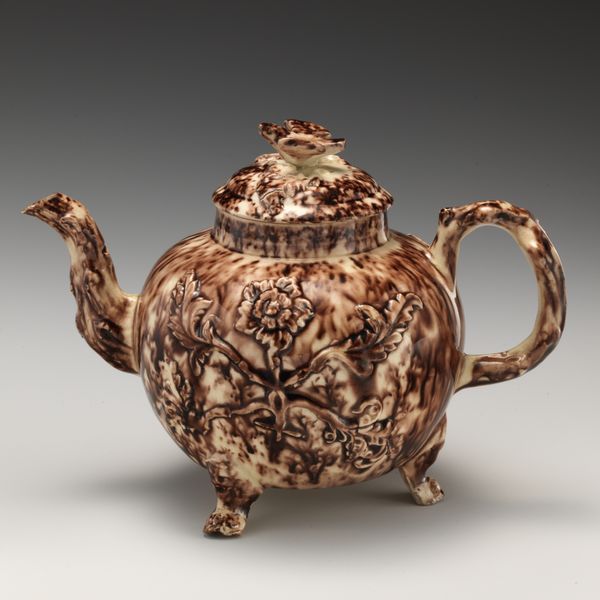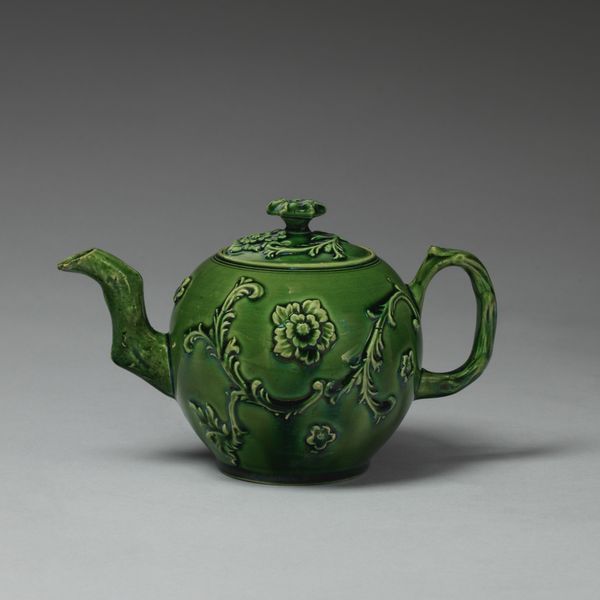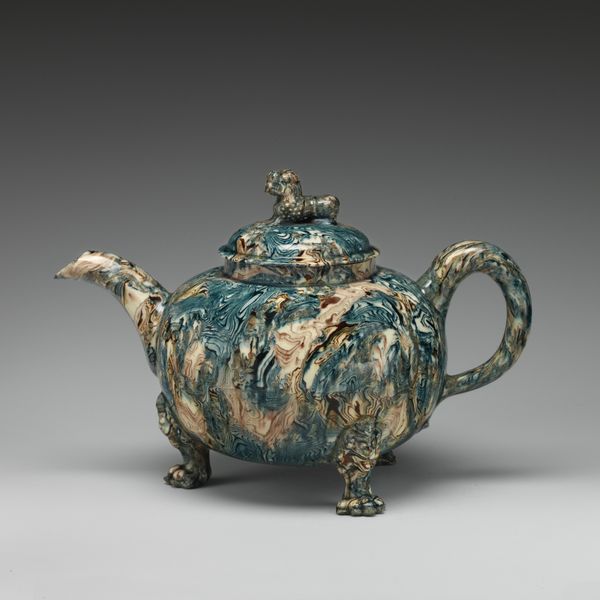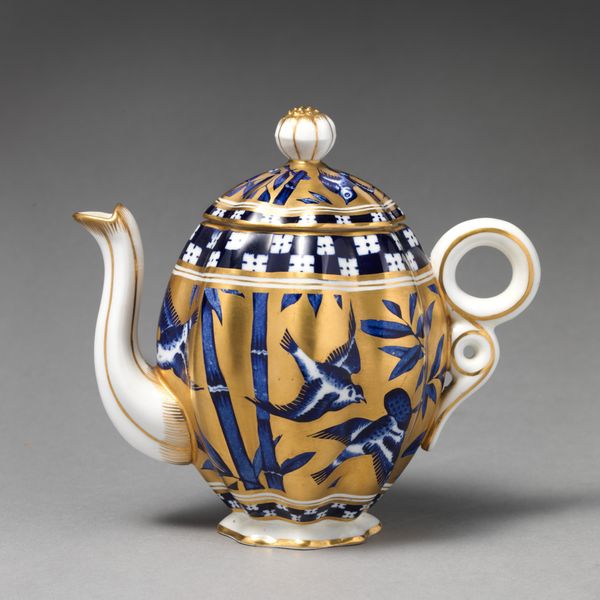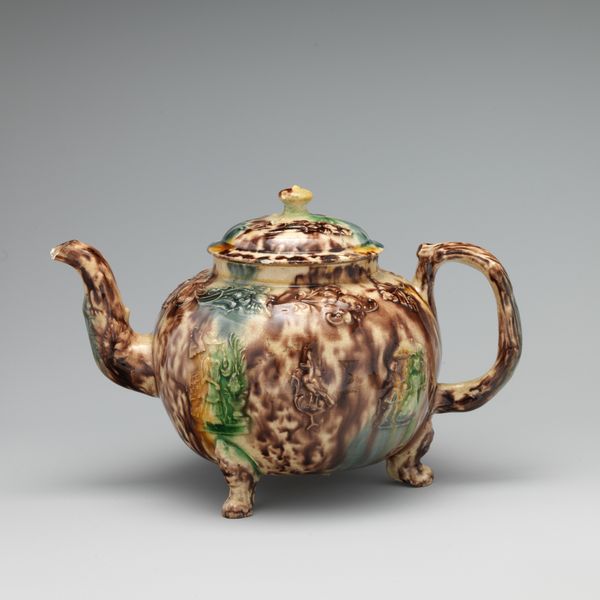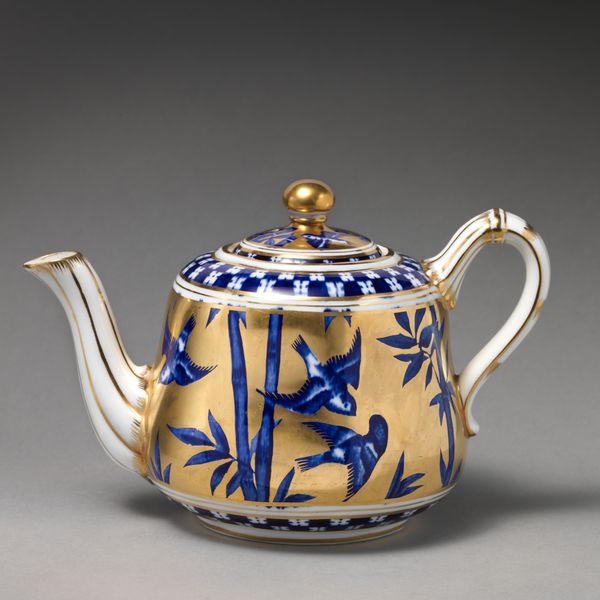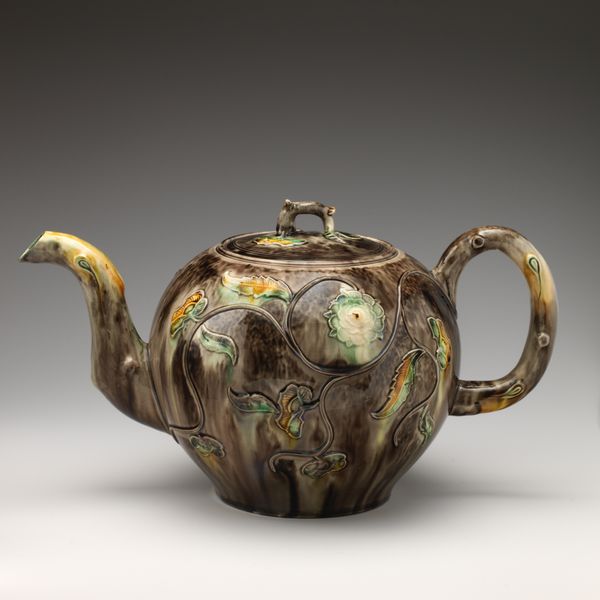
ceramic, sculpture
#
ceramic
#
sculpture
#
ceramic
#
decorative-art
Copyright: Public Domain
This striking teapot with cover and stand was crafted by an anonymous maker, using a Whieldon-type ware. Let’s consider the significance of something as everyday as a teapot. Tea itself has a fascinating, complex history, one deeply intertwined with colonialism and trade. While tea drinking is now seen as quintessentially British, tea is, of course, not native to Britain, but was brought there from China. Drinking tea became popular in Britain in the 17th century, and by the 18th century, when this teapot was likely made, tea drinking had become widespread across British society. Objects like this teapot played a part in solidifying class structures, and in shaping domestic rituals, defining gender roles, and performing social identities. When considering an object made by an anonymous maker, we can reflect on the labor, skill, and creativity that is often overlooked in the creation of functional objects.
Comments
minneapolisinstituteofart almost 2 years ago
⋮
The marblized composition of this teapot and stand imitates agate, a quartz that forms in mutliple layers and colors in rocks. During the 18th century, agateware was often created through combining clays of different colors into a kneaded mass that was then used to form objects.
Join the conversation
Join millions of artists and users on Artera today and experience the ultimate creative platform.

